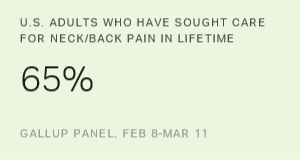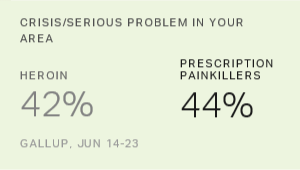The opioid epidemic -- which President Donald Trump recently declared a national emergency -- continues to destroy communities, families and lives at an alarming rate. Deaths from prescription opioid abuse have more than quadrupled since 1999, and more than four in 10 Americans say where they live. And new research suggests that the could be dragging down the economy by keeping Americans out of the workforce.
So what can leaders do about this crisis?
Many public health experts agree that improving pain management practices is one critical piece of the multidimensional puzzle -- a way to prevent new patients from becoming addicted in the first place.
The need to do something about chronic pain is clear. As one example, nearly two-thirds of U.S. adults have had back or neck pain significant enough that they saw a healthcare professional for care at some point in their lifetime, according to the 2017 . And more than one in four (27%) have seen a healthcare professional for neck or back pain in the past 12 months.
Doctors understandably want to ease their patients' pain. But prescriptions for opioid painkillers more than tripled since 1999, even as Americans' self-reported pain levels held steady over the same period, according to the CDC.
The healthcare community has made some progress, with data showing that doctors have prescribed fewer opioid painkillers in recent years. Still, further reducing opioid prescriptions would lower the chances of addiction and reduce the likelihood of patients turning to illegal drugs such as heroin and fentanyl after their prescriptions run out.
Some encouraging news: Americans are to treat their pain. Nearly eight in 10 say they prefer to try other ways to address their physical pain before taking prescription painkillers, according to the .
Additionally, Americans are more likely to perceive nondrug treatments such as physical therapy and chiropractic care as "very safe" and "very effective" for neck and back pain than they are for prescription pain medication, including opioids.

Conduct a Survey
Use our surveys to gather customized national or global data for your research project.
As medical organizations revise their guidelines to encourage drug-free ways to manage pain, doctors and patients alike may be more willing to try these treatments. This willingness could reduce the dosage and duration of opioid painkiller prescriptions in some cases and eliminate the need for them altogether in others.
Open dialogue between doctors and their patients about nondrug treatments could help move the nation one step closer to reducing deaths from opioid abuse.
To learn more, read the brief.



